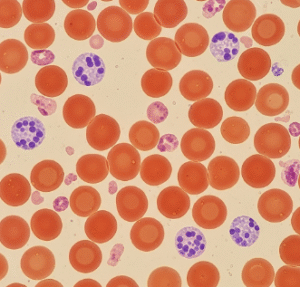Overview
Fistulotomy is a surgical procedure used to treat anal fistulas, which are abnormal connections between the anal canal and the skin near the anus. The procedure involves opening the fistula tract to allow it to heal from the inside out, preventing infection, abscess formation, and chronic discomfort.
In South Korea, fistulotomy is performed in advanced colorectal and proctology centers, emphasizing precision, minimally invasive techniques, and effective post-operative care. Korean hospitals ensure high success rates, minimal complications, and rapid recovery, making it a preferred option for patients with anal fistulas.
What is Fistulotomy?
Fistulotomy is a surgical technique where the fistula tract is carefully opened and cleaned, allowing the wound to heal naturally.
It is typically recommended for patients who:
- Have recurrent anal abscesses or fistulas
- Experience pain, swelling, or discharge near the anus
- Require definitive treatment for chronic fistula
- Seek prevention of further infection or complications
Fistulotomy can be performed as:
- Open fistulotomy → traditional technique for superficial fistulas
- Seton placement or combined procedures → for complex or high fistulas
What are the benefits?
Fistulotomy provides multiple advantages:
- Effective treatment of anal fistulas → removes infection and prevents recurrence
- ➤ Reduces pain and discomfort associated with chronic fistulas
- ➤ Prevents abscess formation and further complications
- ➤ Promotes natural healing from inside out
- ➤ High success rates in Korea → modern surgical techniques minimize recurrence
- ➤ Improves quality of life → restores normal bowel function and hygiene
Procedure Details
1) How should I prepare for Fistulotomy?
Preparation ensures safety and optimal outcomes:
- Medical evaluation → physical examination, imaging (MRI or ultrasound) to map fistula
- Bowel preparation → mild laxatives or enemas may be recommended
- Medication review → discuss anticoagulants or medications affecting healing
- Consent discussion → explanation of procedure, potential risks, and post-operative care
- Anesthesia planning → usually performed under local, spinal, or general anesthesia
2) What happens during the procedure Fistulotomy?
The procedure typically takes 30–60 minutes depending on fistula complexity:
- Anesthesia administration → local, spinal, or general as determined by the surgeon
- Identification of fistula tract → probe or imaging used to trace the tract
- Incision and opening → fistula tract is carefully cut open to expose underlying tissue
- Cleaning and debridement → removal of infected or necrotic tissue
- Wound management → sometimes left open to heal naturally or packed with dressing
- Closure or seton placement → for complex fistulas, a seton may be inserted to allow gradual healing
In Korea, surgeons utilize high-precision instruments, magnification, and imaging guidance, ensuring complete treatment of fistula while preserving sphincter function.
3) What happens after Fistulotomy?
- Immediate recovery → monitored for anesthesia effects and bleeding
- Pain management → analgesics and sitz baths for comfort
- Wound care → regular cleaning, dressing changes, and stool softeners to reduce strain
- Follow-up → check healing progress and ensure no recurrence
- Return to normal activities → light activity allowed; avoid heavy lifting until healing progresses
Risks / Benefits
Potential Risks:
- Mild pain, bleeding, or swelling at the surgical site
- Risk of infection → proper wound care reduces likelihood
- Delayed healing → especially in complex fistulas or patients with chronic disease
- Rare complications → incontinence or damage to sphincter muscles
Key Benefits:
- Definitive treatment for anal fistulas → removes infection and tract
- ➤ Prevents abscess recurrence
- ➤ Minimally invasive with careful technique
- ➤ High success and low recurrence in Korea
- ➤ Preserves bowel and sphincter function
Recovery and Outlook
- Short-term recovery → mild discomfort, controlled with analgesics; sitz baths aid healing
- Functional improvement → pain relief and restored hygiene
- Long-term outcome → most patients achieve complete healing within 4–8 weeks
- In Korea, patients benefit from expert colorectal surgeons, sterile surgical environments, and structured post-op care, ensuring optimal healing and low recurrence rates
When To Call the Doctor
Contact your colorectal surgeon if you experience:
- Excessive bleeding, pus, or swelling
- ➤ Fever or signs of infection
- ➤ Persistent or worsening pain
- ➤ Changes in bowel function or unexpected discharge
- ➤ Delayed healing or wound complications
Early evaluation ensures safe recovery, infection prevention, and complete fistula resolution.
Best Korea Option / Process
South Korea provides world-class fistulotomy services:
- Expert colorectal surgeons → skilled in minimally invasive and open techniques
- Advanced imaging and surgical tools → precise identification and treatment of fistula tracts
- Comprehensive care packages → preoperative evaluation, surgery, and post-op monitoring
- Minimally invasive approaches → preserve sphincter function and reduce recovery time
- International patient support → multilingual staff, appointment scheduling, and personalized care
Patients choosing Korea for fistulotomy can expect safe, effective, and minimally invasive treatment, making it a top destination for anal fistula management in Asia.













